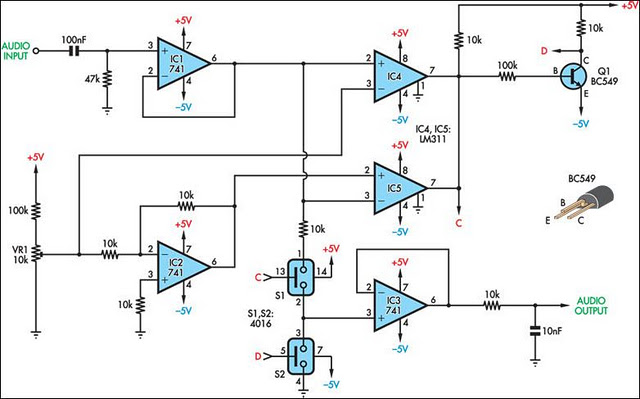Home » Circuits
Audio Level Threshold Control
This circuit was originally designed for use in detecting discharges from individual neurons, where the infrequent discharges are difficult to separate from dominant background noise. It may also prove useful in other applications that need to detect infrequent low-level audio signals against a noisy background. The audio input signal is buffered by op amp IC1 before being applied to the opposing inputs of comparators IC4 & IC5. Positive and negative offset voltages are generated by VR1 and IC2 and fed to the other two inputs of the comparators. Essentially, the comparators act to produce a negative voltage at their commoned outputs (C) whenever the audio signal exceeds either the positive or negative offset voltage.Circuit diagram:
The signal at "C" is inverted by transistor Q1 to produce "D". These two signals are used to control a pair of CMOS switches (S1 & S2), which either pass the audio signal to the output or short it to ground. The signal from the CMOS switches is buffered by IC3, which in conjunction with the 10kΩ resistor and 10nF capacitor filters out the switching artefacts. In practice, the offset voltage is adjusted until there is little or no breakthrough of the noise background at the output. Thereafter, only audio signals exceeding the threshold are passed. Inevitably, this produces some crossover distortion but this is of little consequence compared with the benefit of the quiet background.
Author: Graham Jackman - Copyright: Silicon Chip Electronics

